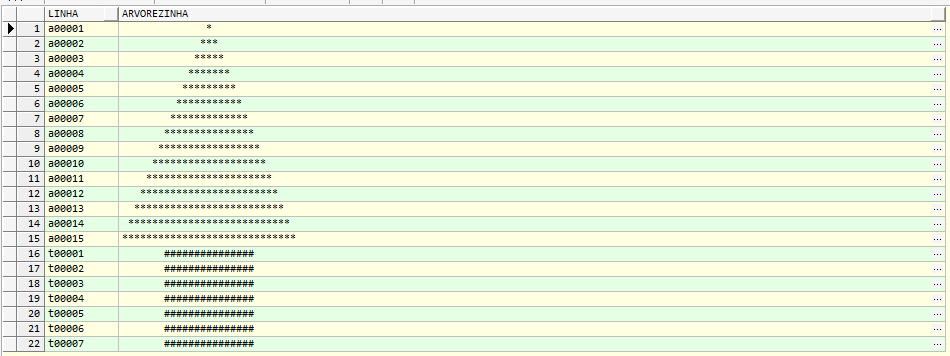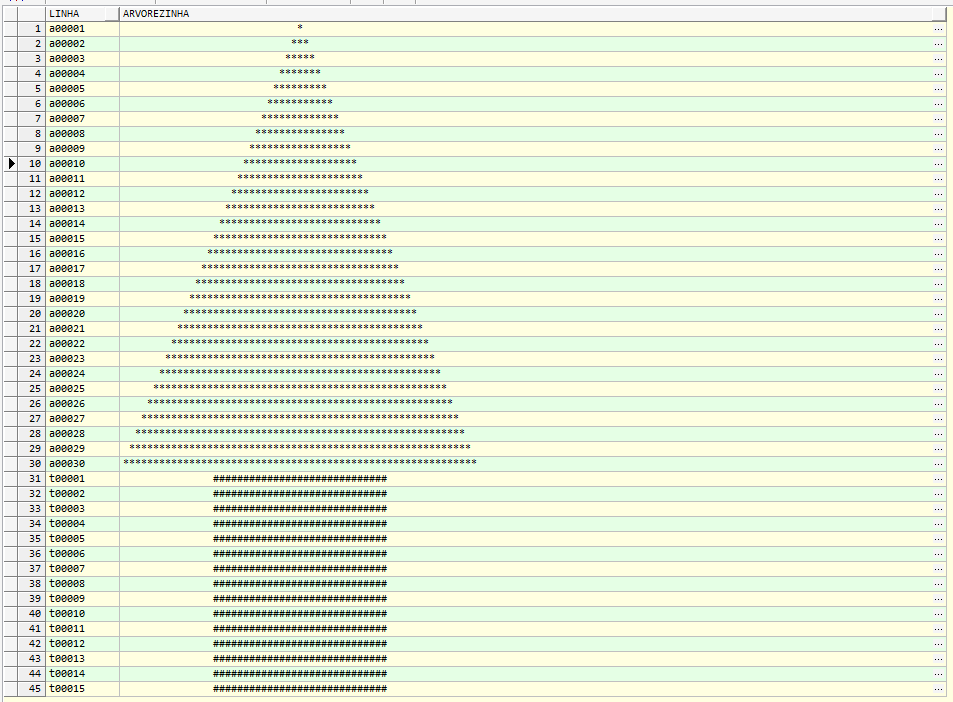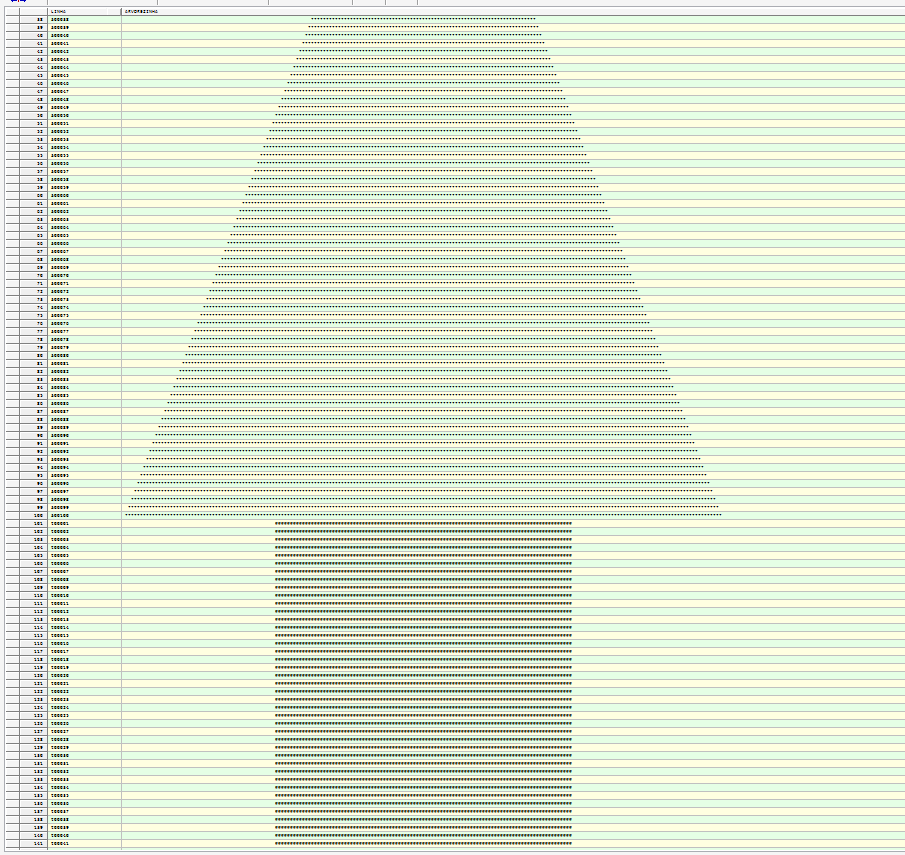The Little Tree
Arvorezinha (meaning little tree in Portuguese) is a hello world-like trivial program which goal is to print a sequence of the same character (usually *) in each line in increasing length. It can be used as an introduction to looping constructs in arbitrary programming languages. For example, for n = 5 an Arvorezinha program would print out:
*
**
***
****
*****
Yes, trivially boring. But still, it gets mildly interesting when you try to implement this in every language you can think of. This is what the guys at blol.org have been doing for the past few years, implementing little trees in almost every language you can think of, from several assembly languages to SQL. Here’s one that runs on the boot sector of a x86 machine.
The limited challenge this provides led to the creation of Arvorezinha 2.0, where the little tree is a bit more like a proper tree, with a trunk and everything. So, for n = 5, an Arvorezinha 2.0 would look like:
*
***
*****
*******
*********
#####
#####
My contribution is an Arvorezinha 2.0 written in Oracle SQL:
select * from (
select 'a'||lpad(level, 5,'0') as linha,
rpad(' ', &height-level, ' ')||rpad('*', 2*level-1, '*')
as arvorezinha
from dual
connect by level <= &height
union
select 't'||lpad(level, 5,'0') as linha,
rpad(' ', ((2*&height-1)/4)+1, ' ')||rpad('#', (2*&height-1)/2, '#')
as arvorezinha
from dual
where mod(&height, 2) = 0
connect by level <= (&height/2)
union
select 't'||lpad(level, 5,'0') as linha,
rpad(' ', ((2*&height-1)/4), ' '||rpad('#', (2*&height-1)/2+1, '#'))
as arvorezinha
from dual
where mod(&height, 2) > 0
connect by level <= (&height/2)
) order by linha asc;
This implementation uses 3 queries. One outputs the upper part (* character) and two others output the trunk (# character), each for when height is even and when it’s odd. Basically it’s a SQL version of the formulas present in the reference implementation. Unfortunately, it depends on the connect by level clause which isn’t part of MySQL or PostgreSQL. Here are some examples, for different values of the height parameter.
Hope you enjoyed our little trees ;-)






